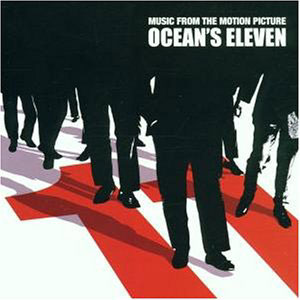
- the evolution of technology & the internet
- the disruption of traditional media & communications
- a focus on user engagement
’2.0’ implies a newer version, or the next phase. Sort of like the difference between Windows XP and Windows 98: a Darwinian concept with the ’surviving’ websites being those that stay most current and most interactive. Some people think all this focus on new internet technology is a ’bubble’, maybe it is as far as investors are concerned, but overall 2.0 is a reality and it is here to stay.
Consider the movie Ocean’s Eleven.
Ocean’s Eleven “1.0” is the original 1960 film featuring an all-star cast of Sinatra, Martin, Sammy Davis Jr., etc. The film was a big hit. However, since the 1960 version is based on old technology, it is far less appealing to a more sophisticated, modern audience than the 2001 edition with Brad, Julia, George, Matt and others.
If you had a choice between watching the 1960 Ocean’s Eleven at an old-school 1960’s theatre, or going to your local theatre and watching the latest Brad Pitt version, which would you choose? You would choose the more modern, “2.0”, version.Why?
The evolution of technology & the internet: The 1960 version is old technology so the experience (visual and interface) is not as good: the film is in black and white, the slang is dated, the clothing styles are weird, the sound effects are minimal and the list goes on. Think dial-up internet and Excite.com vs. broadband speeds and Google.
The disruption of traditional media & communications: You might also prefer the Brad Pitt version because the marketing for the 2001 film was smart and ubiquitous. You recognize products you use daily in the movie. You watched trailers on Myspace, you read a review on IMDB. It was even easier to get tickets: you ordered them online and picked them up at the theatre. Think the difference between Craigslist.com and whatever local paper you or your folks used to read.
A focus on user engagement: The 1960 version was all about getting people into the theatre; putting butts in the seats. The 2001 version was slightly different“ sure, butts in the seats mattered, but what really made the serious coin were the DVD sales. Thus, the 2001 marketing focus was really getting you to ’love the characters,’ to be a believer in the BRAND and to create community so that you would feel compelled to own the movie – not just to ’see it.’ Community? You are part of the community if you follow George Clooney religiously on TMZ.com, or are a member of Brad’s One Campaign. Because you loved the movie, maybe you recommended it on your the Netflix community or posted a Myspace bulletin. Plus, you can be darn sure that the stadium seating makes for a more pleasant viewing experience than some old 1950’s polyester cushions. Think AOL chatrooms and message boards vs. Facebook.com and YouTube’s video sharing.
In a nutshell, ’2.0’ is all about replacing the old with the new: cooler, more interactive iterations with community focus. There are a million different variables that go into 2.0 and people will dissect the relative importance of one development vs. the other, but at its core, 2.0 is all about the three principles above, and a grain of salt.
